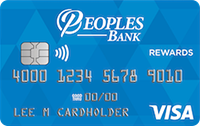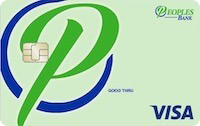Posted On: June 27, 2016 by Peoples Bank in: Financial Education Personal Finance

As of 2015, the average American with credit card debt owes $15,762 – and that’s just credit. Auto loans, student loans, and mortgages add thousands of dollars and years of repayment to your personal finances. However, debt doesn’t have to be a life sentence. Once you have made the commitment to work towards financial freedom, follow these steps from Peoples Trust & Savings Bank to begin eliminating those personal debts.
- Establish an emergency fund immediately. Unexpected events can take a harder hit on your savings than unbudgeted spending habits ever could. Even if you’re juggling a current debt or two, work to set aside $1,000 as soon as you can in a separate emergency checking account. As you chip away at remaining debt, this cushion can protect repayment plans from being flattened by a faulty car battery or flooded basement.
- Adopt the Debt Snowball method. Instead of listing them highest to lowest by interest rates, arrange debts from smallest to largest. Paying off a handful of small debts in the same time it’d take to chip away at a large one eases burdens, yields immediate results, and provides motivation to continue saving.
- Reduce your rates. Refinancing your mortgage and negotiating lower interest rates on credit cards can make a big impact. Reevaluating your health, life, and auto insurance policies may reveal services you don’t need, or it can spur you to shop around for providers with lower rates.
- Chop extraneous expenses. Create a list of unavoidable monthly expenses – rent, utilities, gas, food. Create a second list of leisure expenses – gym memberships, cable, eating out, clothing. After budgeting for the necessities, pick a few discretionary categories you’d like to keep with reduced spending, but cut the rest. Putting your spending on a diet is easier when you allow yourself a few modest outlets.
- Evaluate progress monthly. Creating a multi-year financial plan for eliminating debt is the first step, not the only one. Perform a monthly check-up on your plan to continue spending within your budget. It can also provide a boost of encouragement when you see progress, and you might spot ways in your new financial routine to make your budget even more cost-effective.
It may be a long road to eliminate debt, but it’s within your ability to travel it. Don’t go it alone – contact one of our advisers today to help you create and stick to your financial plan.




